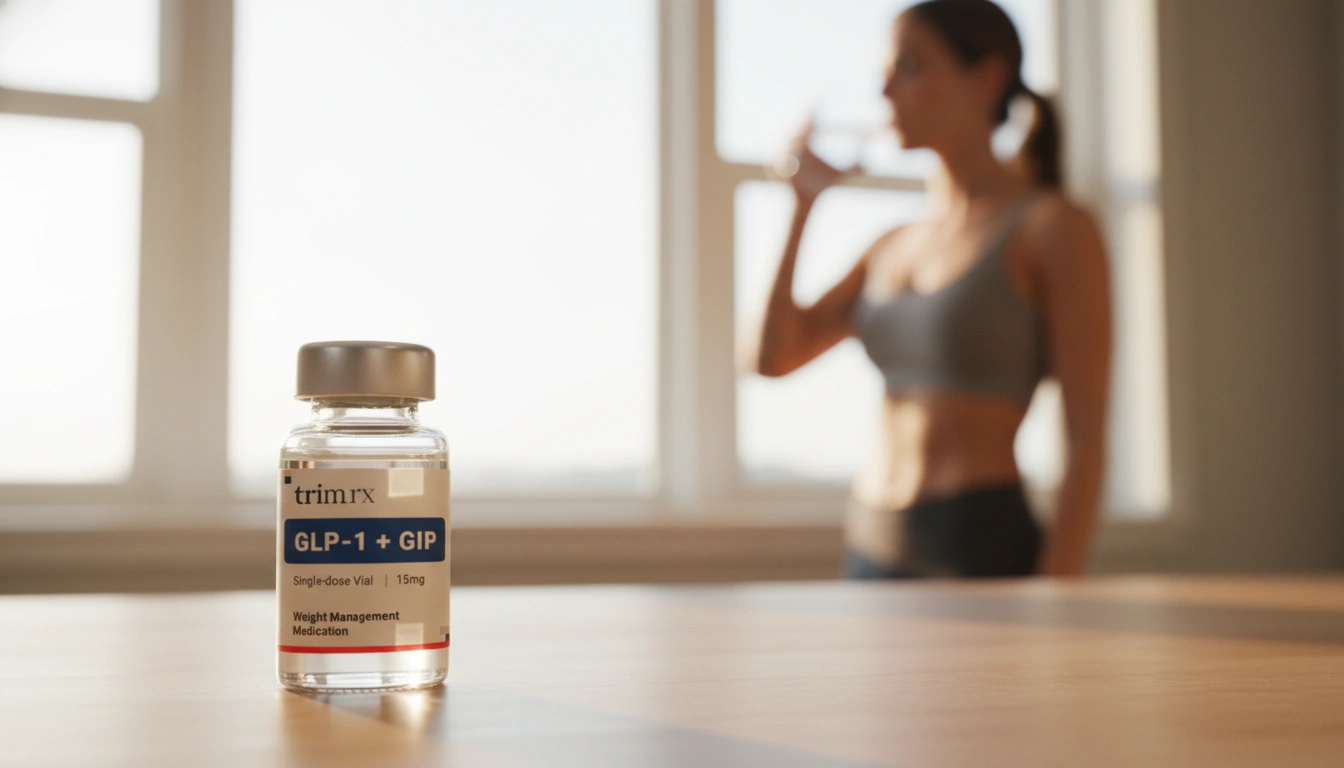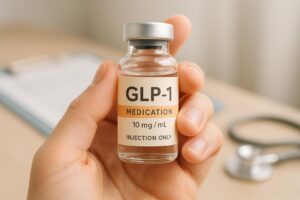How to Make Your Body Produce GLP-1 Naturally: A Comprehensive Guide

Introduction
Did you know that the hormone responsible for controlling your appetite and managing blood sugar levels is naturally produced by your body? Glucagon-like peptide-1 (GLP-1) plays a pivotal role in regulating our metabolism, yet many of us are unaware of how we can enhance its production through simple dietary and lifestyle changes. With obesity and diabetes rates on the rise, understanding how to boost GLP-1 levels naturally has never been more crucial.
The significance of GLP-1 extends beyond just appetite regulation; it helps promote feelings of fullness and reduces cravings. In a world filled with fast food and processed snacks, learning how to make our bodies produce GLP-1 naturally can empower us to take control of our health. In this post, we will explore the science behind GLP-1, discuss foods and lifestyle habits that can naturally elevate its levels, and highlight how this knowledge can contribute to more effective weight management.
By the end of this article, you’ll gain insights into the mechanisms of GLP-1 and practical methods for incorporating these strategies into your daily life. Together, we’ll discover the potential of enhancing our metabolic health through informed choices.
Understanding GLP-1: The Basics
What Is GLP-1?
GLP-1 is a hormone secreted by the intestines in response to food intake. It is part of a family of hormones known as incretins, which play an essential role in glucose metabolism. When we eat, GLP-1 is released into the bloodstream, where it performs several key functions:
- Stimulates Insulin Secretion: GLP-1 prompts the pancreas to release insulin, a hormone that lowers blood sugar levels by facilitating the uptake of glucose by the cells.
- Inhibits Glucagon Release: It suppresses the release of glucagon, a hormone that raises blood sugar levels, ensuring a balanced blood glucose response.
- Slows Gastric Emptying: GLP-1 slows the rate at which food leaves the stomach, contributing to a prolonged feeling of fullness.
- Reduces Appetite: By acting on the brain, GLP-1 signals a reduction in appetite, helping to curb excessive food intake.
The Importance of GLP-1 in Weight Management
The role of GLP-1 in weight management is particularly noteworthy. Research has shown that individuals with obesity often have lower levels of GLP-1 secretion, which can contribute to difficulty in controlling appetite and managing weight. Medications that mimic GLP-1, such as semaglutide and tirzepatide, have gained popularity for their effectiveness in promoting weight loss and improving metabolic health. However, many are looking for natural methods to enhance GLP-1 production without medication.
Foods That Naturally Increase GLP-1 Levels
High-Fiber Foods
One of the most effective ways to boost GLP-1 levels is through the consumption of high-fiber foods. Fiber plays a critical role in stimulating the release of GLP-1 by promoting the production of short-chain fatty acids (SCFAs) during fermentation in the gut. Here are some fiber-rich options:
- Whole Grains: Foods like oats, barley, and quinoa are excellent sources of soluble fiber, which can enhance GLP-1 secretion.
- Fruits: Apples, pears, and berries are not only delicious but also packed with fiber that supports GLP-1 production.
- Vegetables: Leafy greens, broccoli, and Brussels sprouts contain both fiber and essential vitamins that contribute to overall health.
- Legumes: Beans, lentils, and chickpeas are rich in fiber and protein, making them powerful tools for increasing GLP-1 levels.
Healthy Fats
Incorporating healthy fats into your diet can also promote GLP-1 secretion. Unsaturated fats, particularly those found in plant-based oils and fatty fish, are associated with increased GLP-1 levels. Consider adding these foods to your meals:
- Avocados: Rich in monounsaturated fats and fiber, avocados can help regulate blood sugar levels and enhance satiety.
- Olive Oil: As a staple of the Mediterranean diet, extra virgin olive oil is known for its heart-healthy benefits and its ability to stimulate GLP-1.
- Fatty Fish: Salmon, mackerel, and sardines are high in omega-3 fatty acids, which may support GLP-1 production and overall metabolic health.
Lean Proteins
Protein is another crucial component for increasing GLP-1 levels. Consuming adequate protein can lead to enhanced feelings of fullness and help regulate appetite. Some great protein sources include:
- Eggs: A rich source of high-quality protein, eggs can promote GLP-1 secretion and help manage hunger.
- Poultry: Chicken and turkey are lean protein options that can contribute to a balanced diet while supporting GLP-1 levels.
- Plant-Based Proteins: Tofu, tempeh, and legumes provide protein along with essential nutrients and fiber.
Lifestyle Changes to Enhance GLP-1 Production
Regular Physical Activity
Exercise is a powerful tool for improving metabolic health and enhancing GLP-1 secretion. Research indicates that both aerobic and resistance training can lead to increased GLP-1 levels. Aim for at least 150 minutes of moderate-intensity exercise each week, incorporating activities such as:
- Walking or Jogging: Simple yet effective forms of aerobic exercise that can boost overall health.
- Strength Training: Lifting weights or using resistance bands can improve muscle mass and metabolic rate.
- High-Intensity Interval Training (HIIT): Short bursts of intense activity can enhance metabolic responses and stimulate GLP-1 secretion.
Mindful Eating
Practicing mindful eating can also positively affect GLP-1 levels. Slowing down during meals, savoring each bite, and paying attention to hunger and fullness cues can enhance the release of GLP-1 and prevent overeating. Here are some tips for mindful eating:
- Eat Without Distractions: Turn off screens and focus on your meal to enhance awareness of your body’s signals.
- Chew Thoroughly: Chewing food well not only aids digestion but also allows your body to better respond to the meal.
- Pause Between Bites: Take breaks to assess your hunger levels and satisfaction before reaching for more food.
The Role of Gut Health in GLP-1 Production
The Gut Microbiome Connection
Our gut microbiome—the community of trillions of microorganisms living in our digestive tract—plays a critical role in GLP-1 production. A healthy, diverse gut microbiome can enhance the secretion of GLP-1 and other hormones that regulate appetite and metabolism. To support gut health, consider these strategies:
- Consume Prebiotics: Prebiotics are non-digestible fibers that feed beneficial gut bacteria. Foods like garlic, onions, asparagus, and bananas are excellent sources.
- Incorporate Probiotics: Fermented foods such as yogurt, kefir, sauerkraut, and kimchi can introduce beneficial bacteria to your gut, supporting its overall health.
- Reduce Processed Foods: Highly processed foods can disrupt gut health and negatively impact hormone regulation, so focus on whole, nutrient-dense options.
Conclusion
Boosting your body’s production of GLP-1 naturally is a multifaceted approach that combines dietary choices, lifestyle changes, and a focus on gut health. By incorporating high-fiber foods, healthy fats, and lean proteins into your diet, alongside regular physical activity and mindful eating practices, you can harness the power of GLP-1 for improved metabolic health and effective weight management.
As we continue to learn more about the intricate relationship between our diet, lifestyle, and hormone production, it becomes clear that empowering ourselves with knowledge can lead to lasting health benefits. Whether you’re on a weight loss journey or simply looking to enhance your well-being, understanding how to make your body produce GLP-1 naturally is a valuable step towards achieving your health goals.
FAQ
What is GLP-1 and why is it important?
GLP-1 is a hormone produced in the gut that plays a crucial role in regulating blood sugar levels and appetite. It stimulates insulin secretion, inhibits glucagon release, slows gastric emptying, and reduces hunger.
How can I increase GLP-1 levels through diet?
You can increase GLP-1 levels by consuming high-fiber foods (like whole grains, fruits, and vegetables), healthy fats (such as avocados and olive oil), and lean proteins (like eggs and poultry).
Does exercise affect GLP-1 production?
Yes, regular physical activity can enhance GLP-1 levels. Both aerobic exercise and resistance training have been shown to have positive effects on GLP-1 secretion.
How does gut health relate to GLP-1 production?
A healthy gut microbiome contributes to GLP-1 production. Consuming prebiotics and probiotics can help maintain a balanced gut environment, promoting the secretion of GLP-1.
Can I rely solely on diet and exercise to manage my weight?
While dietary and lifestyle changes can significantly impact weight management and overall health, consulting a healthcare provider is always recommended, especially if you have underlying health conditions or are considering weight loss medications.

Transforming Lives, One Step at a Time
Keep reading
Tracking Progress With GLP-1: What To Measure
Learn which metrics to track on GLP‑1 therapy—weight, waist, blood sugar, lipids, side effects, and non‑scale wins—and how often to monitor them.
Fatigue Solutions for Ozempic and Wegovy Users
Hydration, protein-rich meals, light activity, and better sleep can reduce medication-related fatigue and help maintain energy during weight-loss treatment.
GLP-1 Medication Side Effect Checker
Worried about GLP-1 medication side effects? Use our free checker for Semaglutide, Liraglutide, and more to learn what to expect and stay informed!



